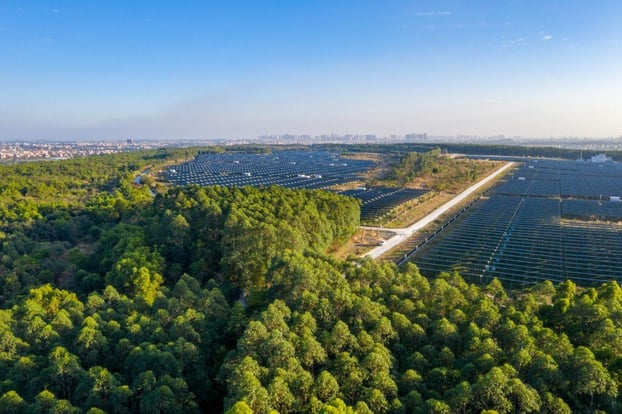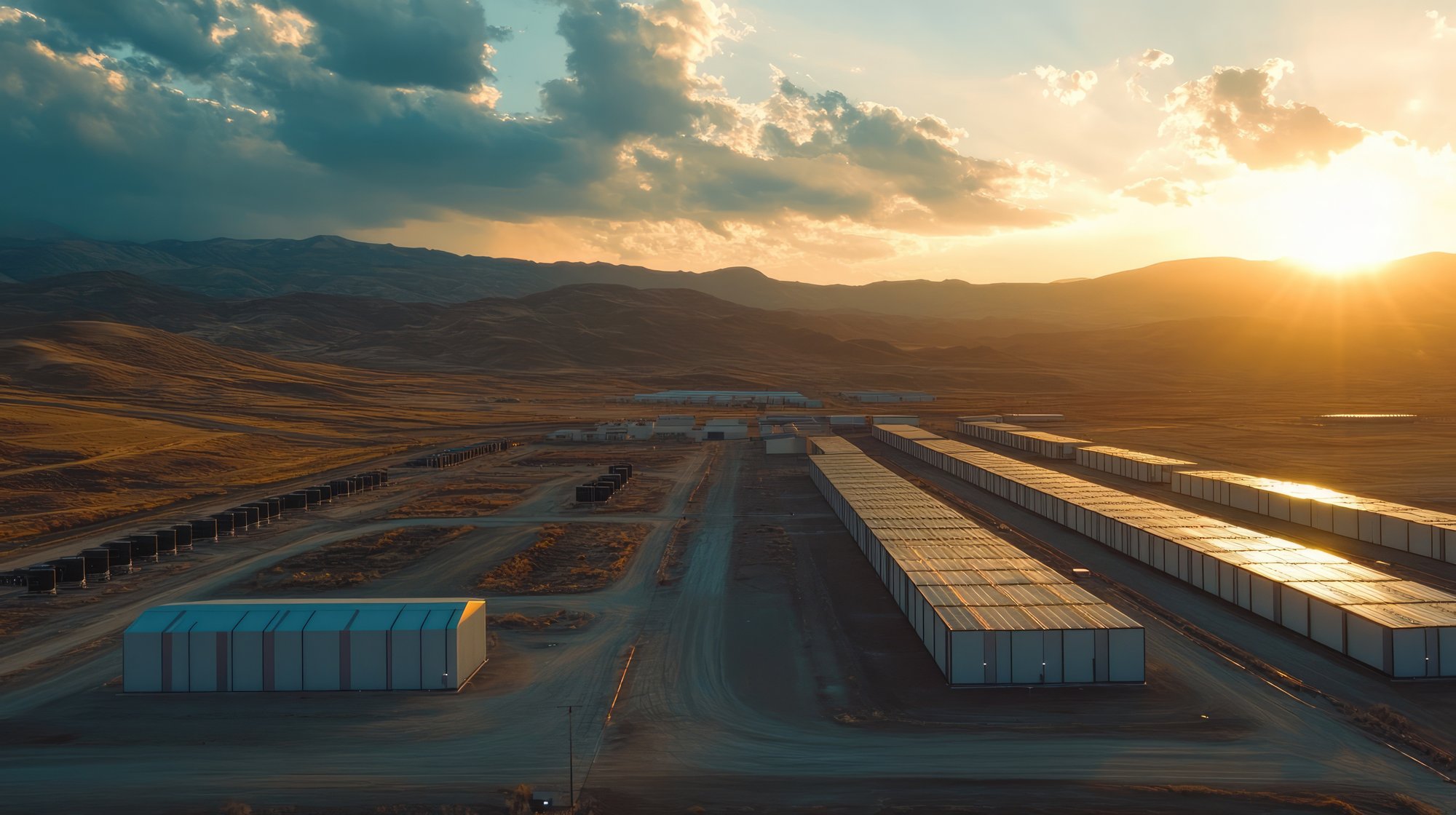[Article 1] Energy Storage Systems: Operational Challenges for Asset Managers and Operators

Stay in touch
Subscribe to our newsletter for expert insights, company updates, and the latest in renewable energy management solutions.
This article is the first article of a seven-part series on energy storage systems where we explore the questions we should be asking, the assumptions we should be validating and the things we should be monitoring to ensure the successful deployment of this important new asset class.
2020 was the tipping point for energy storage as a viable asset class on the power grid. Market acceptance hit an important inflection point as technical innovation progressed, prices declined, and momentum increased for decarbonizing the electric power sector.
But energy storage as an asset class is still immature and has little commercial operating experience from which to validate financial models and substantiate expected investor returns. Like the solar and wind power asset class before it, we have much to learn about the real-world reliability, maintenance requirements and lifecycle economics of energy storage systems.
This new article series on energy storage will explore the questions we should be asking, the assumptions we should be validating and the things we should be monitoring to ensure the successful deployment of this important new asset class participating in the global electric grid.
Throughout the series, I’ll be incorporating insights from operations and asset management leaders in the industry. And, while the articles will focus specifically on battery energy storage systems (BESS), many of the principles will apply to other emerging energy storage technologies.
BESS BUSINESS MODELS
There are two main go-to-market business models for the U.S. BESS marketplace, each with their own drivers and technical requirements:
- Stand-alone systems
- Hybrid systems
STAND-ALONE SYSTEMS
In the stand-alone deployment of energy storage, the BESS unit itself is contracted to provide capacity and/or ancillary services to an off-taker. This type of deployment is typically to fulfill a utility’s resource adequacy (RA) requirement.
Resource adequacy, as the name implies, is a regulatory construct to ensure there is a sufficient electrical reserve margin to safely deliver power during peak electrical demand conditions. Resource adequacy programs are typically offered as a capacity contract with a utility to provide energy during peak demand periods or when intermittent resources, such as solar and wind, are ramping down.
In the stand-alone deployment, the BESS system is not part of an overall solar-plus-storage or wind-plus-storage deployment scheme. Typically, the operational management tasks around stand-alone deployments are less complex than for hybrid systems.
HYBRID SYSTEMS

In the hybrid deployment, the BESS is part of a grid-connected solar or wind power facility. Depending on the interconnection requirements and strategy of the owner, the BESS could be DC- or AC-coupled to the primary power plant.
As you might imagine, energy storage coupled with a wind or solar plant adds complexity to the asset management and O&M functions of the plant due the market optionality that the storage system adds to the facility as well as due to different monitoring and maintenance requirements that an integrated system brings to the facility.
For example, the maintenance frequency of the storage system may not coincide with the maintenance intervals of the solar power equipment. Questions such as if and how to best bundle solar and storage maintenance tasks are still being answered.
BESS ACTORS
There are a variety of players in the energy storage marketplace. For the purposes of this article series, we will focus on the ones described below.
Asset Managers: Asset managers, whether part of an owner’s internal team or contracted, are tasked with overseeing the economic dispatch of the storage systems, managing the O&M contractor’s field service work and characterizing and managing operational risk. Asset managers need complete transparency into the commercial deployment and operations of the energy storage system.
Operators: The O&M contractor, or operator, is responsible for the safe monitoring and maintenance of the energy storage system equipment. The skill set required to operate and maintain solar and wind power operating equipment is easily adapted to maintaining a battery storage system. Operators are not generally responsible for the commercial deployment (scheduling) of the energy storage system on the grid, though they need visibility of past and upcoming dispatch schedules of the equipment to plan their work and monitor the warranty. O&M contractors need insights into the operating condition of the equipment and the ability to respond to alerts and safely service the equipment.
Scheduling Coordinators: Qualified scheduling entities (QSEs), or scheduling coordinators, submit bids and offers on behalf of owners of energy storage systems. QSEs submit offers to sell and/or bids to buy energy in the Day-Ahead Market and the Real-Time Market. QSEs generally provide trading and schedule coordination services for a variety of electric generation asset classes and can be electric utilities. QSEs need periodic updates to their dispatch assumptions to ensure that the true cost of cycling the asset is properly reflected in their models.
Off-Takers: The buyers of the energy and ancillary services provided by BESS assets are typically electric utilities via an RA contract or power purchase agreement (PPA). Off-takers may have direct operational control of the energy storage asset and be able to perform discharge cycles on the asset to meet economic or operational control requirements.
System Integrators and Manufacturers: Manufacturers of BESS equipment provide the battery modules and other components that systems integrators package into a complete energy storage system. This includes the battery and energy management systems, environmental control equipment and other auxiliary systems.
Owners: The actual asset owner and economic beneficiary of the capacity, energy and ancillary service contract revenues. Owners need to know that their investment is being properly monitored, maintained and operated, and that they are receiving optimal returns on the use of their investment.
INFORMATION GAPS AND RISK
Because there is so little operating history with this new asset class, financial models incorporate many parameters and assumptions that are not informed by historical operating experience. This lack of data and transparency introduces operational and economic risk to stakeholders.
When the first modern wind turbines came on the market a few decades ago, who could have imagined the industry-wide prevalence of gearbox failures? And who could have predicted that almost all the solar module and inverter manufacturers of twenty years ago would have shuttered their factories by 2021?

We don’t know what will turn out to be the Achilles heel in the BESS market segment – or if there will be one at all. What we can safely assume, however, is that some energy storage model assumptions will be proven inaccurate and cause economic loss to some stakeholders.
In my discussions with industry experts, a key takeaway was that warranty, maintenance and performance guarantee terms vary widely from different system providers for essentially the same technology. The variability of quoted lifetime charge cycles, maintenance costs and equipment failure rates from manufacturers reveals that there are still a lot of unknowns for this asset class. Operators and asset managers of energy storage systems need to fill these information gaps if this new energy asset class is to be successfully deployed in the market.
SUMMARY
In this series of articles, I will talk with the experts about the tools and information they are looking for to manage and optimize the use of this asset. Energy storage systems are rapidly being deployed in the market and the need for industrial-strength operations and decision-support systems is increasing.
I hope this series of articles will help shine a light on the need and propose some potential solutions. Looking forward to your thoughts and insights.
Steve Hanawalt is EVP and co-founder of Power Factors. For more articles like this, follow him on LinkedIn or check out the rest of our blog.

-2.jpeg?width=2000&name=AdobeStock_785443953%20(1)-2.jpeg)
![[Article 4] Tools and Information Operators Need to Monitor and Maintain Storage Assets – Part II](https://www.powerfactors.com/hubfs/solar-power-F68K65X-2500px.jpg)
![[Article 2] What Operators Needs to Know About BESS Information Gaps](https://www.powerfactors.com/hubfs/aerial-top-view-of-a-solar-panels-power-plant-LG9ZG4C.jpg)
![[Article 3] Tools and Information Operators Need to Monitor and Maintain Storage Assets – Part I](https://www.powerfactors.com/hubfs/solar-panel-B9QUV8N.jpg)